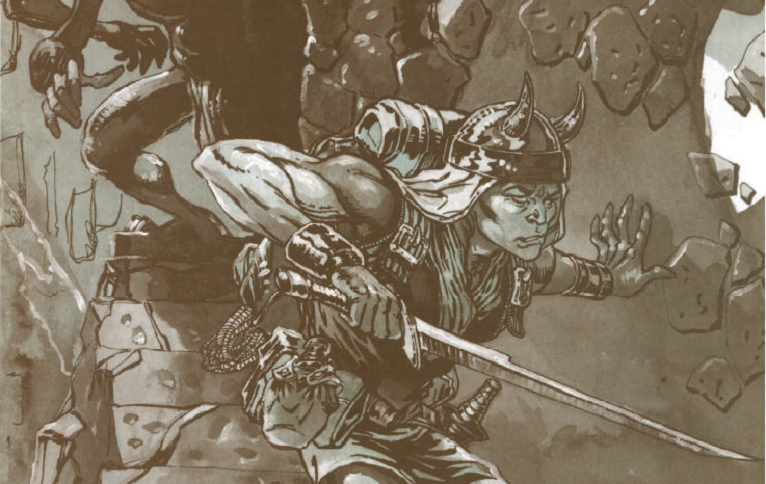“Of Sigil and the Sea” isn’t the first Planescape piece by William James Cuffe, but it is the first (though not the only…) one we’ll be covering here. Prior to this article, which is featured in issue #137 of Polyhedron, its July 1999 edition, he’d contributed a short and notoriously terrible Planescape piece to Polyhedron #133. Titled “Stench Cow recipes!”, what was printed bore little relationship with what he actually wrote. His original version, called “To Serve Planars…” was still a goofy piece that’s by no means essential reading, but at least it is far, far better than what Polyhedron produced. That original version can be found here, on Cuffe’s own website Living Sigil. He would also write an RPGA scenario titled “Heirs of Elemental Evil” that is unfortunately one of the lost modules I’ve mentioned obliquely a few times in the past and will be covering in slightly more depth in the future, courtesy the help of Mr. Cuffe himself.
In any case, “Of Sigil and the Sea” is a fantastic piece of Planescape lore that’s a welcome addition to any campaign. It expands upon a short passage of In the Cage detailing a location called The Ditch. In that book, The Ditch only receives five paragraphs of explanation, but what’s there feels ripe for expansion. It introduces the idea of The Guild of Teamsters, the Ditch Beast, and the possibility of using this one small body of water for transportation to other planes. Cuffe takes this blip of information and runs with it, putting a magnifying glass on the location in four pages of material that act as a wonderful addition to the original. Really, it makes you wish for more pieces of this sort that would take a closer look at particular neighborhoods in Sigil, though unfortunately that would never come to pass.
Following a brief recap of what the Ditch is to those who don’t remember it, Cuffe details nine points of interest there, all of which could easily serve as the catalyst for exploration in the area. This includes Suicide Falls, which is where water from The Ditch slips past the edge of the city’s torus; The Bridge That Spans Worlds, a suspension bridge built over The Ditch made with intricate and astounding craftsmanship; Seafarer’s Arch, which contains a new type of portal that makes sense of the original idea of traveling this waterway to different planes; and even the remains of an Arcane galleon in the form of The Arcane Remains. It’s not a terribly long piece of writing, but every location is given love, and there’s no filler to be found.
Best of all, “Of Sigil and the Sea” also offers new ideas about Sigil and its past. The Knife in the Water is the remnant of the fight between the Lady of Pain and the crew of The Arcane Remains, and we learn that the Spelljammer vessel’s attack was so fierce it wounded the Lady of Pain, “slamming into her with the multiverse’s wrath” and tearing one of the knives from her halo. There’s also mentions of The Hollow World from Mystara here as well as Red Steel, plus a sly reference to the joke faction the Beautification League, who was originally featured in an April Fool’s Day article in Dragon years earlier (I chose not to include it in this series due to its non-canonical status). Here’s where you’ll find a portal to the worlds Athas of Dark Sun and Aebernys of Birthright. Despite its short length, the essay is peppered with Easter eggs for both Planescape and general D&D fans.
To cap it all off, “Of Sigil and the Sea” featured an original map of the area by none other than Planescape’s own Rob Lazzeratti. While unfortunately the originally printed version was in black-and-white because of Polyhedron‘s format, at the end of 2001 Wizards of the Coast posted a color version of this online. This map is exactly as lovely as you’d hope, and gives the article dignity it deserves. Really, my only complaints about this whole article are that it’s so obscure few know of its existence, and that the only version of it I found online was in a difficult-to-read scanned PDF.
Unfortunately, this will be the last Planescape addition to Polyhedron, and either the final or penultimate time we ever cover that strange, identity-uncertain newszine in this series (dependent upon what I decide about a weird crossover event during the zine’s even more uncertain Paizo era). But at least it went out with something very good, and while I wish the original were easier to read, in 2018 some kind soul transcribed it and mashed it together with the color map. That version is available for download here.




